The Americas ITU region stretches from the icy terrains of Canada in the North to the vibrant landscapes of Argentina in the South. It includes North, Central, and South America along with the Caribbean, encompassing a rich mix of cultures, economies, and geographies. From the tech hubs of Silicon Valley to the Amazonian rainforests of Brazil, this region is a blend of innovation and tradition. Telecommunications in the Americas sees a mix of mature markets with high internet penetration, like the US and Canada, and emerging markets aiming to expand their digital footprints.
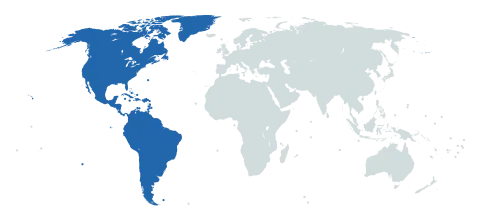
4G Coverage & Internet Use (% of Population)
Top Ten 4G Bands
Countries
The are 50 countries in this region.

Jamaica, an island nation located in the Caribbean, exhibits a geography characterised by mountainous terrains, coastal plains and a tropical climate, which can pose challenges for the establishment and maintenance of technology and telecommunication infrastructures. The nation's population of approximately 2.9 million is primarily distributed in urban areas, notably in the capital city of ...

Martinique, a French overseas territory located in the Caribbean, has a population of around 370,000 people, mostly concentrated in the capital, Fort-de-France. The island's hilly and volcanic terrain presents challenges for infrastructure development, including telecommunications. Despite this, Martinique boasts a fairly modern and well-developed telecommunications infrastructure. Fixed broadband ...
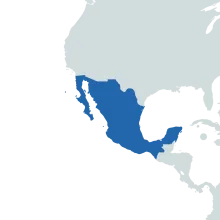
Mexico, located in the southern part of North America, has a diverse topography ranging from mountainous areas to coastal regions, which can present challenges for telecommunications infrastructure deployment. The population of approximately 128 million people is distributed unevenly, with a concentration in urban areas like Mexico City, Guadalajara and Monterrey. This necessitates a blend of both ...

Montserrat, a British Overseas Territory located in the Caribbean, is known for its challenging geographical conditions. The island is comprised of a single active volcano, the Soufrière Hills, which erupted in 1995, causing significant population displacement and impacting the infrastructure. Today, the northern part of the island is more densely inhabited due to volcanic activities in the south ...

Nicaragua, located in Central America, is one of the larger countries in the region, and has diverse terrain that includes volcanoes, mountains, and coastal regions. Its population of around 7 million is heavily concentrated in the western regions, particularly in the capital, Managua. The country's telecommunications sector is still developing, with mobile networks covering most urban areas but ...

Panama, situated in Central America, has a unique elongated geography which stretches 80 km at its narrowest point, dividing the Atlantic and Pacific Oceans. This makes it a significant transit nation, evident from the world-renowned Panama Canal. The country's population of approximately 4.3 million is predominantly urban, with about half living in Panama City, the capital. In terms of ...
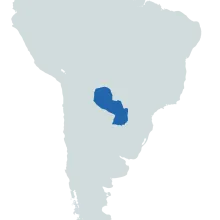
Paraguay, a landlocked country in South America, is bisected by the Rio Paraguay with a vast majority of the population residing in the eastern region of the country. The western region, known as the Chaco, is sparsely populated and consists mostly of semi-arid plains. Paraguay's infrastructure, particularly within telecommunications, has seen significant improvements in recent years, although it ...
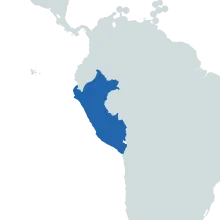
Peru, a South American country characterised by its diverse geography, consists of arid coastal regions, towering Andes mountains, and dense Amazon rainforest. Its population of approximately 34 million people is unevenly distributed, with a concentration in urban areas like Lima, the capital, which hosts a third of the population. The imbalance in population distribution poses a challenge to the ...

Puerto Rico, an unincorporated territory of the United States, is located in the northeast Caribbean Sea. With a total land area of 8,897 square kilometres supporting a population of approximately 3.2 million, the island is densely populated. The topography is dominated by central mountain ranges, coastal plains, and urban areas, most notably the capital San Juan. Despite significant challenges ...

Saint Kitts & Nevis, located in the Caribbean, is the smallest nation in the Americas both in size and population, having less than 50,000 residents, mainly concentrated in urban areas. This dual-island nation is predominantly mountainous, potentially posing challenges for the deployment of infrastructure. However, the country has adapted to its unique geography by leveraging submarine and ...

Saint Lucia, an island nation in the Eastern Caribbean, is made up of a single island that spans roughly 617 square kilometres. The population, totalling approximately 180,000 residents, is dispersed across various urban areas, including the capital, Castries. The hilly, mountainous terrain, combined with limited road access in some regions, can pose challenges for technology and ...

Saint Pierre & Miquelon, a French overseas territory, is located in the North Atlantic Ocean near Newfoundland, Canada. With a population of just over 6,000 spread largely across two islands, the terrain is rugged and the climate harsh. Telecommunications infrastructure is relatively advanced for the size and remoteness of the territory, with cellular mobile networks and broadband internet ...

Saint Vincent and the Grenadines, an island nation in the Caribbean, comprises a main island, Saint Vincent, and a chain of smaller islands, the Grenadines. The rugged topography, coupled with the scattered nature of the islands, poses challenges for the deployment of infrastructure. The population of approximately 100,000 people is unevenly distributed, with most inhabitants residing in Kingstown ...

Sint Maarten, a constituent country of the Netherlands, is located in the southern part of the Caribbean island shared with Saint Martin, a French overseas collectivity. The geography is hilly and small, covering just 34 square kilometres, which could present certain challenges for extensive infrastructure development. The population of approximately 42,000 people is unevenly distributed, with the ...
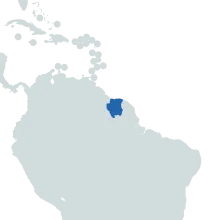
Suriname, located on the north-eastern coast of South America, is largely covered by tropical rainforest, with its population of approximately 600,000 concentrated in the coastal belt where the capital city, Paramaribo, is located. This population distribution presents challenges for telecommunications infrastructure, as the dense forest and sparsely populated interior regions are difficult to ...